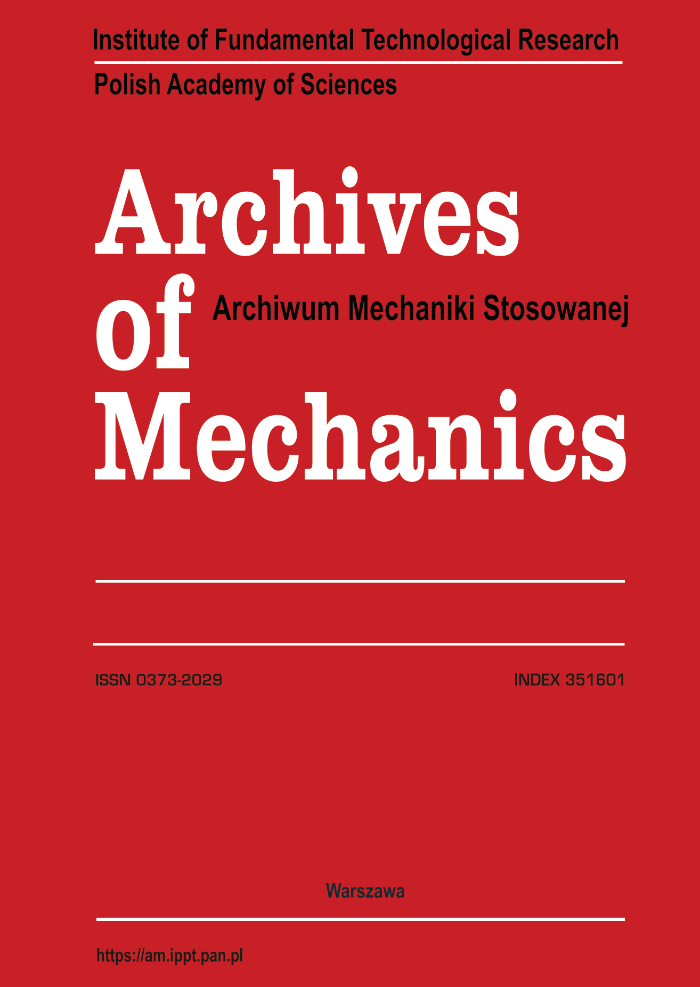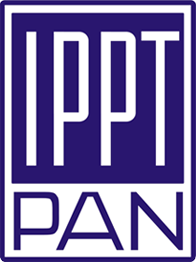Abstract
The paper presents improvements over an earlier developed three-dimensional refined plate theory. The improved theory removes the disadvantage of the earlier theory in that it does not properly satisfy transverse shear stress conditions, and deficiency in being suitable only for flexure problems. The improved theory is suitable for use in flexure, as well as, for vibrations and stability problems of plates. The theory is simple, easy to use and accurate. The number of unknown variables involved are the same as those associated with thin plates, viz. only one in the case of flexure and vibrations; and three in the case of stability. The theory is based on displacement. The theory, to keep it as simple as possible, uses the concept of targeted displacements (which contribute only towards specific stresses, moments, shear forces, axial forces). All the stresses are represented realistically. The theory uses all strain displacement relations, and satisfies, as accurately as possible, all constitutive relations. The moments and forces satisfy gross equilibrium equations. The theory has some noteworthy similarities with the earlier developed well known theories. Due to these similarities, the experience of dealing with the earlier developed theories can be harnessed. Illustrative examples bring out the eficacy of the theory.Keywords:
plate theory, thick plate theory, exact plate theory, three-dimensional plate theory, refined plate theoryReferences
- S.P. Timoshenko, S. Woinowsky-Krieger, Theory of Plates and Shells, 2nd ed., McGraw-Hill Book Co., New York, 1959.
- E. Reissner, The effect of transverse shear deformation on the bending of elastic plates, ASME Journal of Applied Mechanics, 12, 2, A69–A77, 1945, https://doi.org/10.1115/1.4009435.
- R.D. Mindlin, Influence of rotatory inertia and shear on flexural motions of isotropic, elastic plates, ASME Journal of Applied Mechanics, 18, 1, 31–38, 1951, https://doi.org/10.1115/1.4010217.
- K.H. Lo, R.M. Christensen, E.M. Wu, A high-order theory of plate deformation – Part 1: Homogeneous plates, ASME Journal of Applied Mechanics, 44, 4, 663–668, 1977, https://doi.org/10.1115/1.3424154.
- A.V. Krishna Murty, Higher order theory for vibrations of thick plates, AIAA Journal, 15, 12, 1823–1824, 1977, https://doi.org/10.2514/3.7490.
- M. Levinson, An accurate, simple theory of the statics and dynamics of elastic plates, Mechanics Research Communications, 7, 6, 343–350, 1970, https://doi.org/10.1016/0093-6413(80)90049-X.
- T. Kant, Numerical analysis of thick plates, Computer Methods in Applied Mechanics and Engineering, 31, 1, 1–18, 1982, https://doi.org/10.1016/0045-7825(82)90043-3.
- J.N. Reddy, A simple higher-order theory for laminated composite plates, ASME Journal of Applied Mechanics, 51, 4, 745–752, 1984, https://doi.org/10.1115/1.3167719.
- E. Carrera, Evaluation of layerwise mixed theories for laminated plates analysis, AIAA Journal, 36, 5, 830–839, 1998, https://doi.org/10.2514/2.444.
- R.P. Shimpi, Refined plate theory and its variants, AIAA Journal, 40, 1, 137–146, 2002, https://doi.org/10.2514/2.1622.
- S. Srinivas, A.K. Rao, C.V. Joga Rao, Flexure of simply supported thick homoge-neous and laminated rectangular plates, ZAMM – Journal of Applied Mathematics and Mechanics / Zeitschrift für Angewandte Mathematik und Mechanik, 49, 8, 449–458, 1969, https://doi.org/10.1002/zamm.19690490802.
- N. Pagano, Exact solutions for rectangular bidirectional composites and sandwich plates, Journal of Composite Materials, 4, 1, 20–34, 1970, https://doi.org/10.1177/002199837000400102.
- R.K. Kapania, S. Raciti, Recent advances in analysis of laminated beams and plates. Part I – Shear effects and buckling, AIAA Journal, 27, 7, 923–935, 1989, https://doi.org/10.2514/3.10202.
- Y.M. Ghugal, R.P. Shimpi, A review of refined shear deformation theories of isotropic and anisotropic laminated plates, Journal of Reinforced Plastics and Composites, 21, 9, 775–813, 2002, https://doi.org/10.1177/073168402128988481.
- S. Abrate, M. Sciuva, Equivalent single layer theories for composite and sandwich structures: A review, Composite Structures, 179, 482–494, 2017, https://doi.org/10.1016/j.compstruct.2017.07.090.
- R.P. Shimpi, Zeroth-order shear deformation theory for plates, AIAA Journal, 37, 4, 524–526, 1999, https://doi.org/10.2514/2.750.
- R.P. Shimpi, H.G. Patel, Free vibrations of plate using two variable refined plate theory, Journal of Sound and Vibration, 296, 4-5, 979–999, 2006, https://doi.org/10.1016/j.jsv.2006.03.030.
- R.P. Shimpi, H.G. Patel, A two variable refined plate theory for orthotropic plate analysis, International Journal of Solids and Structures, 43, 22-23, 6783–6799, 2006, https://doi.org/10.1016/j.ijsolstr.2006.02.007.
- R.P. Shimpi, H.G. Patel, H. Arya, New first-order shear deformation plate theories, ASME Journal of Applied Mechanics, 74, 3, 523–533, 2007, https://doi.org/10.1115/1.2423036.
- R.P. Shimpi, R.A. Shetty, A. Guha, A single variable refined theory for free vibrations of a plate using inertia related terms in displacements, European Journal of Mechanics, A/Solids, 65, 136–148, 2017, https://doi.org/10.1016/j.euromechsol.2017.03.005.
- R.P. Shimpi, K.S. Pakhare, P. Punith, P.J. Guruprasad, The static pull-in insta-bility analysis of electrostatically actuated shear deformable microbeams using single vari-able refined beam theory variants, Archive of Applied Mechanics, 92, 2917–2950, 2022, https://doi.org/10.1007/s00419-022-02215-0.
- R.P. Shimpi, Three-dimensional refined plate theory using targeted displacements and its variant, AIAA Journal, 61, 7, 3229–3233, 2023, https://doi.org/10.2514/1.J062677.
- S.P. Timoshenko, J.N. Goodier, Theory of Elasticity, 3rd ed., McGraw-Hill Book Co., New York, 1970.
- R.M.J. Groh, P.M. Weaver, Static inconsistencies in certain axiomatic higher-order shear deformation theories for beams, plates and shells, Composite Structures, 120, 231–245, 2015, https://doi.org/10.1016/j.compstruct.2014.10.006.
- J.N. Reddy, N.D. Phan, Stability and vibration of isotropic, orthotropic and laminated plates according to a higher-order shear deformation theory, Journal of Sound and Vibra-tion, 98, 2, 157–170, 1985, https://doi.org/10.1016/0022-460X(85)90383-9.
- S. Srinivas, A.K. Rao, Buckling of thick rectangular plates, AIAA Journal, 7, 8, 1645–1646, 1969, https://doi.org/10.2514/3.5463.







